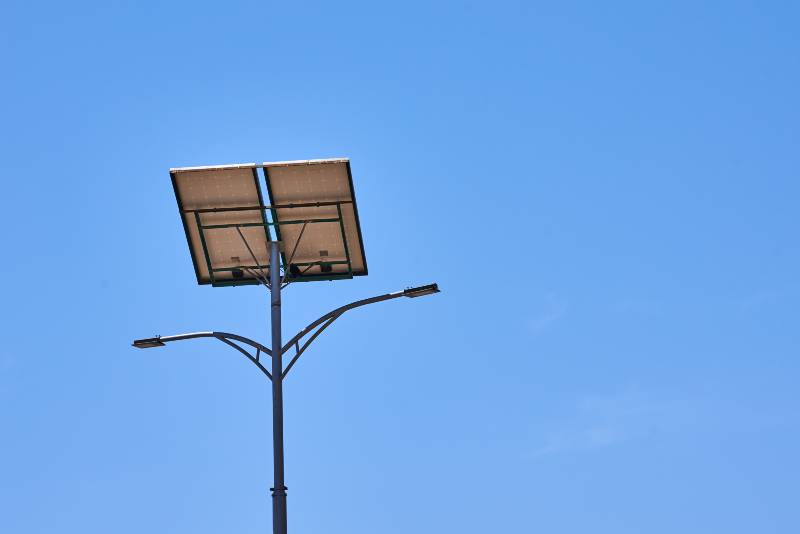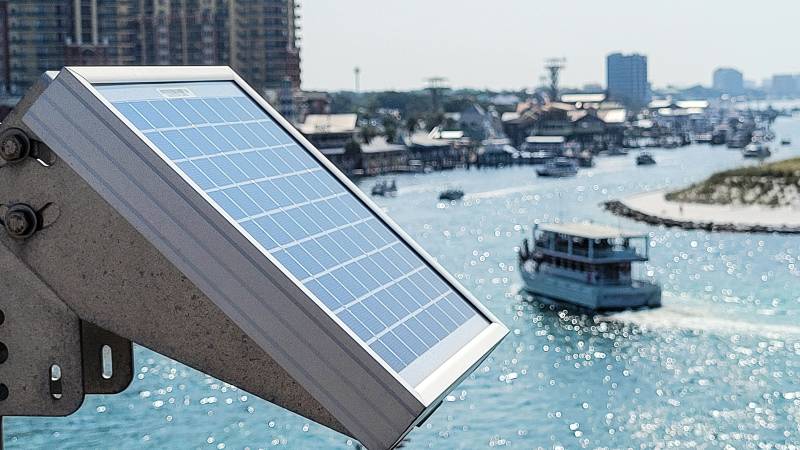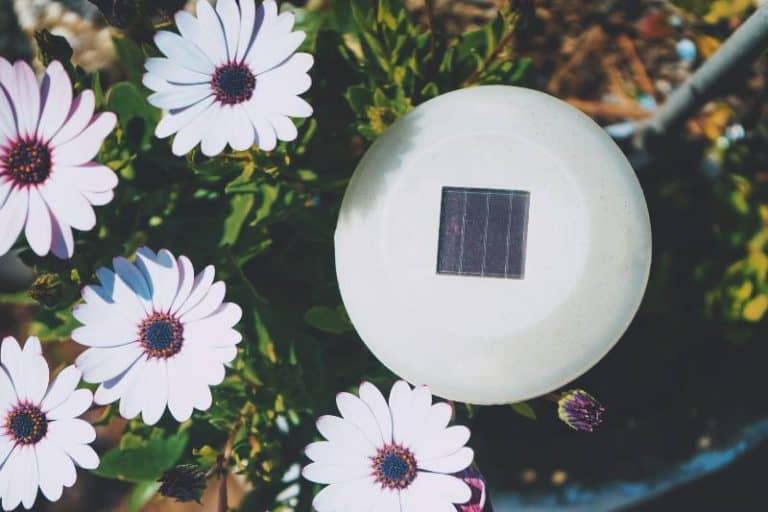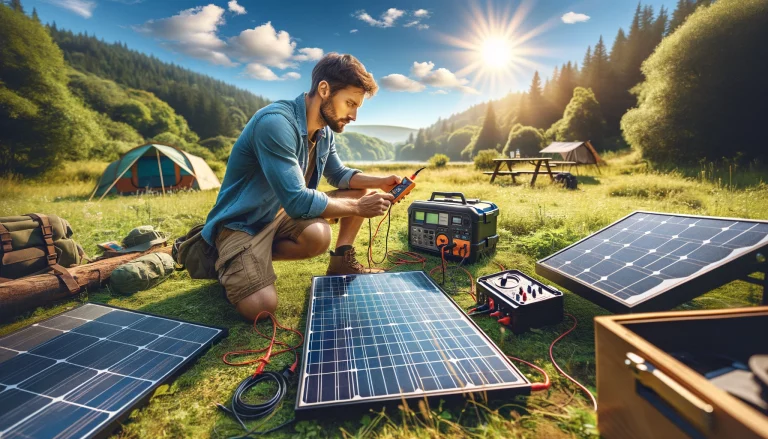Why Solar-Powered Lights are a Bright Idea for Outdoors
Do you want to maximize the functionality and appeal of your outdoor space without breaking the bank? Solar-powered outdoor lighting might be just what you need! Switching from traditional electric lighting to solar-powered lights not only saves energy, it’s also a cost-effective way to brighten up your backyard. Whether you’re looking for landscape accents or security lighting, going with solar can bring you all sorts of benefits. Read on to learn more about why solar-powered outdoor lighting is an easy win for any homeowner!
Solar-powered outdoor lighting offers cost savings, reducing electricity bills. It promotes environmental sustainability by harnessing renewable energy, decreases carbon footprints, and eliminates wiring hassles. These lights are durable, require minimal maintenance, and enhance safety. A sustainable solution, they combine economic and eco-friendly advantages for modern outdoor spaces.
Key Takeaways
- Solar-powered outdoor lighting not only reduces electricity bills but also contributes significantly to environmental sustainability by decreasing the carbon footprint.
- The absence of electrical wires offers a safer outdoor environment and allows easy installation without the need for a grid connection, making solar lights highly flexible in placement.
- With the combination of long-lasting LEDs and efficient solar panels, these lights require minimal upkeep, ensuring that they remain a reliable and cost-effective lighting solution for a long time.
History and Development of Solar Lighting
Early uses and the evolution of solar panels
Solar energy, the boundless power harnessed from the sun, has seen significant developments and transformations over the centuries. The fascination with solar energy can be traced back to ancient civilizations. The Greeks, Romans, and Egyptians, for instance, used sunlit mirrors to light torches for religious ceremonies. But it wasn’t until the 19th century that the foundations of modern solar technology were laid.
In 1839, French scientist Edmond Becquerel discovered the photovoltaic effect, which is the principle behind the operation of solar cells. He observed that certain materials would produce a small amount of electric current when exposed to sunlight. However, it wasn’t until 1954 that Bell Labs developed the first practical silicon solar cell. This breakthrough was monumental, as it meant sunlight, which was available everywhere and didn’t cost a penny, could be converted directly into electricity.
Imagine a gigantic apple pie. Every day, the sun serves as a pie of this magnitude filled with energy. Before solar panels, we were merely nibbling at the crust, but now, with evolving solar technology, we’ve begun to feast on more substantial slices.
The development of solar panels has been evolutionary. From the initial efficiency rate of about 4% in those first silicon cells, we’ve witnessed a dramatic increase to efficiencies exceeding 20% in commercial solar panels today. This means that modern panels can capture and convert sunlight more efficiently than ever before, akin to a sponge soaking up more water with every squeeze.
Advances in battery storage and LED lighting
Storing this solar energy efficiently has been a concurrent challenge. Early solar setups faced the limitation of providing power only when the sun was shining, making nighttime or cloudy days problematic.
Enter the advancements in battery storage! Traditional lead-acid batteries, which were bulky and had limited storage capacities, paved the way for more efficient storage solutions like lithium-ion batteries. These newer batteries can store more energy in a compact space, allowing for consistent power delivery, even when the sun goes down.
Imagine having a massive water tank that fills up slowly during a drizzle but can supply water seamlessly during a drought. Modern battery storage systems act similarly, absorbing energy during the sunlit hours and dispensing it steadily during the darker periods.
In tandem with solar advancements, there has been a revolution in lighting technology, particularly with the advent of LED (Light Emitting Diode) lighting. Traditional incandescent bulbs were like those old gas-guzzling cars – they did the job but were inefficient. On the other hand, LEDs are like electric vehicles – sleek, efficient, and durable. LEDs consume a fraction of the power that traditional bulbs used, and they last much longer. This means that the energy harnessed from the sun through solar panels and stored in advanced batteries can light up homes for extended periods with minimal energy usage.
Top Benefits of Solar-Powered Outdoor Lighting
1. Economic Savings:
When we dive into the world of solar lighting, the first thing many homeowners and businesses notice is the sheer potential for economic savings. Firstly, there’s a significant cost-saving in the long run. While the initial investment for solar lighting might be slightly higher than traditional lighting, over time, this cost is rapidly offset by the savings you’ll achieve. Think of it like buying a coffee machine instead of getting your daily brew from a café.
There’s an upfront cost, but in the long run, you save a substantial amount. Likewise, the reduction in electricity bills becomes evident as the months roll on. Instead of powering up your lights from the grid every night, you’ll be using the free energy the sun provides during the day. It’s akin to nature gifting you a discount on your monthly bills!
2. Environmental Impact:
Solar lighting is like giving Mother Earth a helping hand. With every switch to solar, there’s a considerable reduction in your carbon footprint. Traditional electricity sources often involve burning fossil fuels, which release carbon dioxide.
However, solar panels, once manufactured, produce energy without emissions. Plus, by embracing solar lighting, you’re making a significant contribution to sustainable energy goals. Imagine a world where everyone switched to solar; the collective reduction in greenhouse gases would be monumental.
3. Ease of Installation:
One of the delights of solar lighting is how hassle-free its installation is. There’s no need for extensive wiring or grid connection, which means you don’t need to tear up your garden or drill through walls. Additionally, the flexibility in placement ensures you can position the lights wherever you desire, be it your garden, driveway, or patio. Think of them like Lego pieces for adults; place them where you want without the constraints of wired connections.
4. Low Maintenance:
Solar lights shine brightly in the maintenance department. With the longer lifespan of LEDs and solar panels, you won’t be constantly replacing bulbs or fixtures. Moreover, the overall minimal upkeep required ensures peace of mind. Once installed, they’re like the reliable family cat, always there, demanding very little attention but providing consistent comfort.
5. Safety and Reliability:
When we discuss safety, solar lights stand out prominently. The absence of electrical wires reduces risks associated with electric shocks, short circuits, or even potential fire hazards. Additionally, solar lights promise continuous lighting during power outages, acting as a beacon when other lights go out. It’s like having a trusty flashlight that’s always on, guiding you during unexpected blackouts.
Comparative Analysis: Solar vs. Traditional Outdoor Lighting
Drawing a comparison between solar and traditional outdoor lighting is like comparing a smartphone to a rotary phone. While both serve the primary purpose of communication, the former is vastly more efficient and versatile. Over time, the cost-effectiveness of solar lighting becomes glaringly evident. The initial costs are offset by reduced energy bills, less frequent replacements, and minimal maintenance.
Factors to Consider When Switching:
Switching to solar lighting is thrilling, but there are some points to ponder. One should consider the size and efficiency of solar panels – larger isn’t always better; efficiency plays a pivotal role. Also, scrutinize the battery storage capacity; it determines how long your lights will stay illuminated during the night. Lastly, always account for the location and the amount of sunlight your space receives. Just like how plants need ample sunlight to thrive, solar lights need their fair share to shine brilliantly.
Don’t miss out on this informative and interesting article about fighting inflation by saving money with portable solar panels. You’ll discover how this sustainable solution can help you cut down on energy costs and contribute to a greener environment. Start harnessing the power of the sun today and be part of the movement toward a more sustainable future!

The Benefits of Solar-Powered Outdoor Lighting FAQs
Do solar-powered lights require a lot of maintenance?
No – solar-powered lights require minimal maintenance. In fact, they are designed to last longer than traditional lighting and need only occasional cleaning to stay in optimal condition.
What are the environmental benefits of solar outdoor lighting?
Solar-powered outdoor lighting not only reduces your electricity bills but also helps reduce the carbon footprint associated with conventional energy sources. Solar panels don’t emit harmful gases or cause air pollution, thus making them all the more earth-friendly.
How reliable are solar lights during power outages?
Solar-powered lights are extremely reliable during power outages and offer a great deal of safety when other forms of lighting go out. Unlike traditional lights, solar lights don’t rely on the electrical grid for their power but instead, use energy from the sun. This means they remain illuminated even in the event of a blackout.
Can I install solar-powered lights myself or do I need professional help?
You definitely need professional help when installing solar-powered lights. Although the installation is relatively straightforward, it pays to get a professional’s opinion regarding placement and other technical aspects of the setup. Professional installers are also adept at troubleshooting any issues that may arise during the process.
What are the initial costs associated with setting up solar outdoor lighting?
The initial cost of installing a solar lighting system can vary depending on the type and size of fixtures you choose. Generally, installation costs range from $200 to $400 per fixture, but this is offset by lower energy bills in the long run. Additionally, once installed, solar-powered lights require minimal maintenance and are designed to last for years.
Conclusion
Solar-powered outdoor lights offer a great number of advantages for homeowners and businesses alike. It is an economical choice that reduces electricity bills in the long run and provides an eco-friendly solution to lighting needs. With no wires needed for installation and durable components designed for outdoor settings, these versatile lights can be used almost anywhere.
Moreover, they are easy to maintain and come with minimal repair costs. Adding style and atmosphere to any outdoor area, solar-powered outdoor lighting is a great way to make the most out of any space while keeping wallets full and minds at ease. To stay up to date on the latest news from Electrik Living regarding solar power and sustainable living practices, be sure to sign up for our newsletter today!






